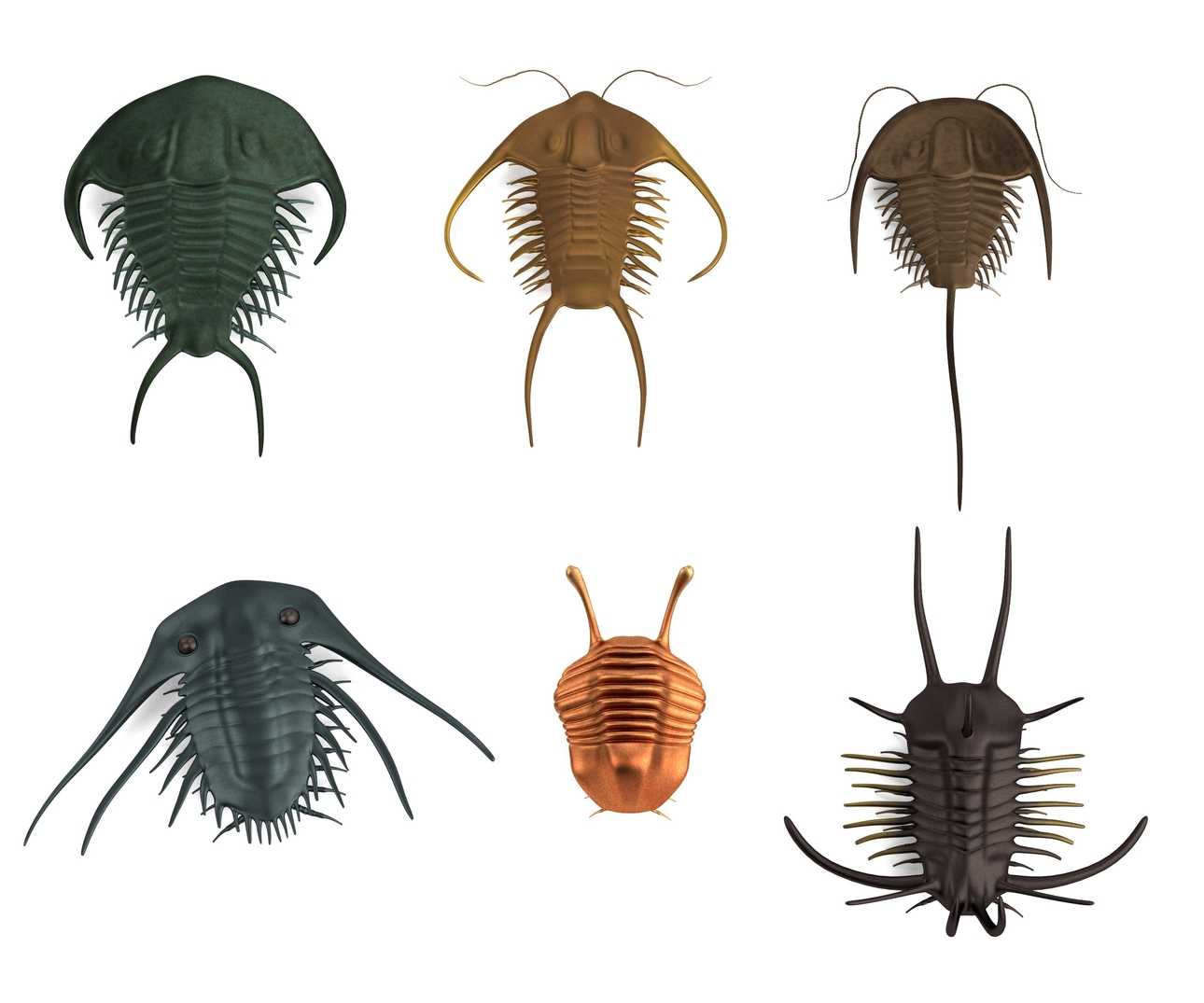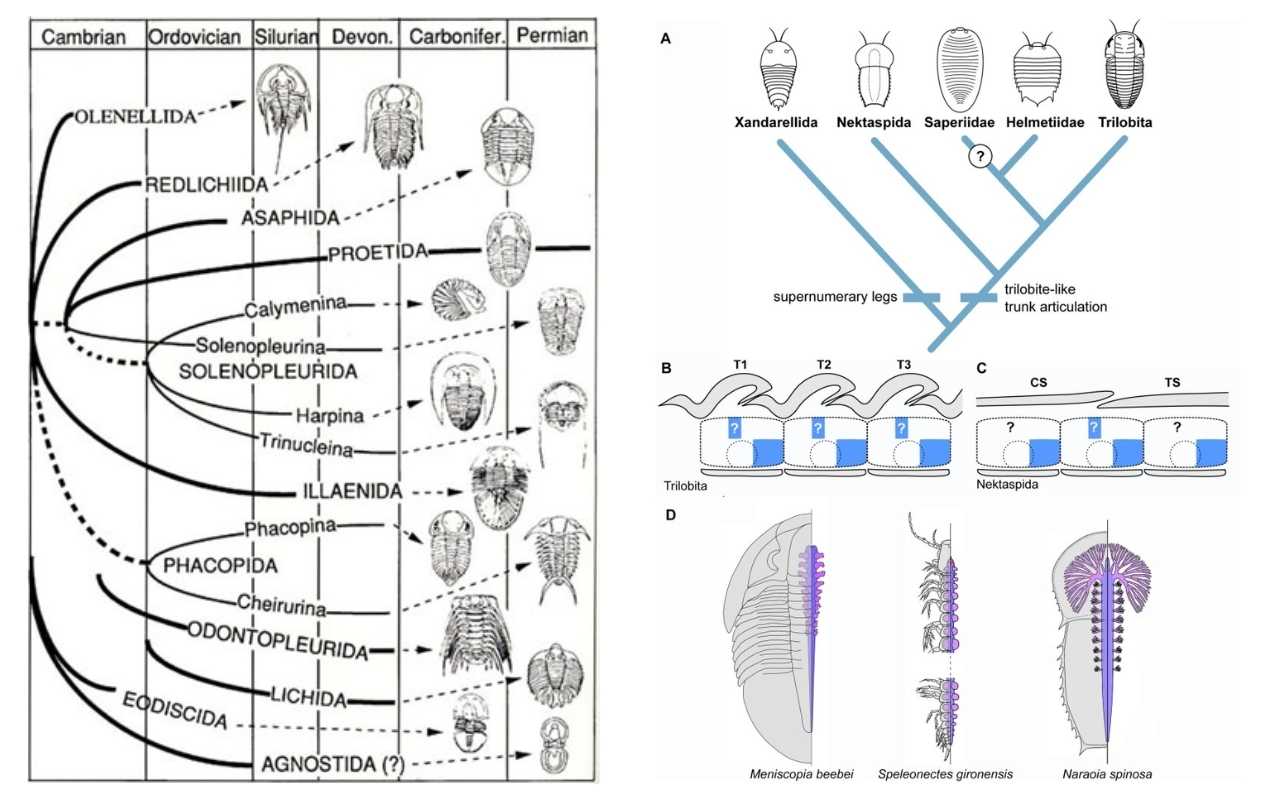Trilobite: Ancient Arthropods that Dominated the Seas

Trilobite is an extinct class of marine arthropod that first appeared in the Cambrian period over 521 million years ago. Characterized by its protective exoskeleton divided into three longitudinal lobes, trilobite proliferated in the seas for nearly 300 million years until the end-Permian extinction wiped out most species. With over 20,000 described species, trilobite displayed an incredible diversity and filled a variety of ecological niches during the Paleozoic era. Its excellent fossil record provides a glimpse into the early evolution and development of complex life.
Introduction to Trilobite and Its Evolution

Trilobite, whose name means “three lobes” in Greek, was among the first arthropods to evolve hard, calcified exoskeleton. Its distinct anatomy featuring multiple body segments covered by a protective exoskeleton allowed it to survive and thrive in the marine environments of the early Paleozoic. Trilobite proliferated rapidly during the Cambrian explosion over 500 million years ago, with its fossils providing the primary evidence for this burst of evolutionary radiation. For many millions of years, trilobite was the dominant benthic animal in most marine paleoenvironments until the mass extinction at the end of the Permian wiped out the vast majority of species.
Trilobite displayed an incredible diversity in its nearly 300 million years of existence, occupying a variety of ecological niches and exhibiting a wide range of adaptations. Early trilobites were generally small, averaging around 2-3 cm in length, but later species evolved to grow quite large, with some species reaching 70 cm in length. Despite its extinction around 252 million years ago, trilobite remains integral to biostratigraphy and provides key insights into the early development of complex marine life.
Morphology and Anatomy of Trilobites

The defining anatomical feature of trilobites is their protective exoskeleton, divided longitudinally into three lobes from which their name is derived - the central axial lobe and two pleural lobes along the sides. This tripartite division provided an effective protective covering while still allowing flexibility. The exoskeleton was made of calcite or calcium carbonate, making it durable enough to fossilize.
Trilobite bodies can be divided into three main tagmata or functional regions – the cephalon (head), thorax, and pygidium (tail). The cephalon contains the primary sensory organs, most notably the compound eyes. Trilobite eyes were among the first and most complex optical systems to evolve, with some species boasting up to 15,000 lenses in each eye. This provided an incredible depth of field, allowing trilobites to detect food, predators, and mates.
Below the cephalon, the thorax contains multiple limb-bearing segments which enabled locomotion along the seafloor. The number of segments varied between species, allowing evolutionary adaptation to different environments and modes of life. The pygidium is the tail end and contains fused segments plus the growth zone of the exoskeleton.
Evolution, Extinction, and Importance of Trilobites

Trilobites appear suddenly in the fossil record during the early Cambrian period around 521 million years ago. Their hard exoskeletons fossilized readily, allowing paleontologists to study their evolution and development over time. Early trilobites were small and simple, but new species rapidly emerged as they adapted to new ecological niches. Trilobite diversity peaked during the Ordovician period, with over 1000 genera inhabiting a wide range of marine environments.
Throughout the Paleozoic era, trilobites remained abundant and diverse until the mass extinction at the end of the Permian wiped out most species around 252 million years ago. Only a handful of lineages survived into the Triassic period, before completely dying out. The reasons for their eventual extinction remain uncertain, but likely involved increased competition, predation pressures, and environmental changes. The disappearance of trilobites left a vacant niche that would eventually be filled by other arthropods such as crabs, lobsters, and shrimp.
Fossil Record and Preservation of Trilobites
The prevalence and diversity of trilobites make them extremely useful index fossils in biostratigraphy and for dating strata. Their readily preserved hard exoskeletons provide an exquisite record of their forms and evolution. Moulted exoskeletons also fossilized, recording growth and development. Fossil trilobite tracks even reveal how they moved and behaved.
Some sites display spectacularly preserved trilobite fossils. For example, the Wheelton Shales in England contain densely packed trilobites representing a mass molting event. The Beecher’s Trilobite Bed in New York contains thousands of complete trilobite fossils showing great detail of legs, antennae, and eyes. Major museum collections boast remarkable trilobite specimens, such as the renowned Walliserops trifurcatus – the largest complete trilobite ever found.
Authentic trilobite fossils can be obtained from reputable fossil dealers. Common genera include Elrathia, Calymene, Flexicalymene, and Phacops from sites across the world. Legal restrictions apply for collecting at most fossil sites, but quality museum-grade specimens are available for purchase. Trilobite fossils range from inexpensive small fragments to rare intact specimens costing thousands of dollars.
Life Stages and Development of Trilobites
Like other arthropods, trilobites grew through successive molting stages known as instars. Their development is divided into three main stages based on growth and sexual maturity:
Protaspid – The earliest developmental stage after hatching from eggs as tiny embryos. Protaspids were under 2mm in length and underwent multiple molts while developing basic body segments. They lacked differentiation between segments.
Meraspid – The juvenile stage where segmentation became more defined and limbs developed. Meraspids underwent more molts to reach maturity, with proportional changes between segments occurring with each instar.
Holaspid – The mature, adult stage where full differentiation occurred between cephalon, thorax, and pygidium. Little proportional change took place after maturity. Holaspids reproduced to continue the life cycle.
This pattern of distinct developmental stages was consistent across trilobite taxa. However, some variations occurred between species and environments. Growth rates, number of molts to maturity, ultimate size, and life spans differed greatly. Some species even exhibited polymorphism where the same larva could develop into different adult forms.
Diet and Feeding Habits of Trilobites
Trilobites exhibited diverse feeding modes occupying distinct ecological niches. Some functioned as active predators, some as scavengers, and others as filter feeders. Most trilobites fed on organic detritus at the seafloor, ingesting mud and extracting microorganisms. Some species displayed elaborate jaws for shredding and grinding food. Others used specialized mouthparts to filter fine particles from the water column.
A group known as alimentary trilobites fed on plankton and algae swept into their mouths by legs modified into ventilation appendages. Predatory trilobites have even been discovered with the remains of other small animals in their gut regions. Other species exhibited symbiotic relationships with sulfur-oxidizing bacteria, providing shelter and nutrients in exchange for organic carbon produced by the bacteria. This diversity of feeding types allowed trilobites to thrive in the Paleozoic seas.
Molting Behavior and Growth Cycle of Trilobites
Like all arthropods, trilobites had to regularly shed their rigid exoskeletons in order to grow. After hatching, trilobites molted repeatedly as juveniles to reach maturity. The frequency of molting decreased once adult size was attained. The molting process followed 4 main stages:
- Separation of old exoskeleton along predefined suture lines
- Emergence from old shell by contraction of muscles
- Expansion of new soft exoskeleton and regeneration of lost limbs
- Hardening of new exoskeleton through mineralization
Facial sutures on the cephalon's underside allowed the head shield to split during molting. This suture pattern is important taxonomically for identifying trilobite species. Since trilobites were vulnerable until their new shell hardened, molting was a risky time. However, it allowed growth and regeneration, an evolutionary advantage despite the dangers.
Conclusion
Trilobites were one of the most successful early animal groups, dominating the oceans for over 270 million years. Their excellent fossil record makes them extremely valuable for understanding the development of Paleozoic marine ecosystems. As early arthropods, trilobites evolved successful protective exoskeletons and optical systems that served them well before going extinct. Their unique morphology and diversity of forms and lifestyles provide a snapshot into deep evolutionary time, inspiring paleontologists and fossil lovers today. Trilobites’ reign in ancient seas remains integral to appreciating the story of life on Earth.
Interested in Owning a Trilobite Fossil?
If you're captivated by the world of trilobites and would like to have a piece of their ancient legacy, consider exploring our collection of trilobite fossils at Morocco Fossils. Our selection includes a variety of trilobite specimens, each holding a unique story from the distant past.
Visit Morocco Fossils to discover our exquisite trilobite offerings and bring a piece of prehistoric history into your life.
References
Fortey, R. (2000). Trilobite! Eyewitness to Evolution. Alfred A. Knopf, New York.
Gould, S.J. (1989). Wonderful Life: The Burgess Shale and the Nature of History. Norton, New York.
McNamara, K.J. (1990). Evolutionary Trends in Trilobites. University of Kansas Press, Lawrence, Kansas.
Mikulic, D.G., Landing, E. & Kluessendorf, J. (1985). A Silurian soft-bodied biota. Science 228, 715-717.
Whittington, H.B. (1997). Treatise on Invertebrate Paleontology, Part O, Trilobita (revised). Geological Society of America, University of Kansas Press.